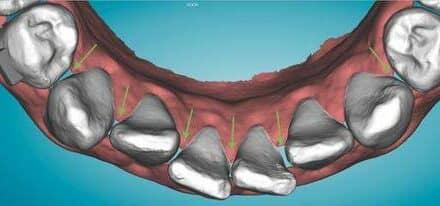
The researchers, according to an articleon DrBicuspid.com, had 23 practicing orthodontists evaluate six patientcases with a range of orthodontic problems, including crowding, severeskeletal asymmetry, temporomandibular disorder, and impactions. Afterreviewing patient histories, study models, photos, and radiographs, theorthodontists provided a hypothetical diagnosis and treatment plan andassociated confidence (0% to 100%). They then evaluated CBCT scans forthese patients and noted changes, enhancements, or confirmations to theoriginal diagnosis and treatment plan.
Of 137 total diagnoses, a CBCT scan was requested 58 times, resultingin 22 diagnostic changes and 23 treatment plan changes. After review ofthe CBCT scans, initial diagnostic and treatment-plan confidenceincreased from 85% to 93% and 83% to 92% respectively (p < 0.5).









